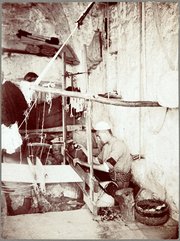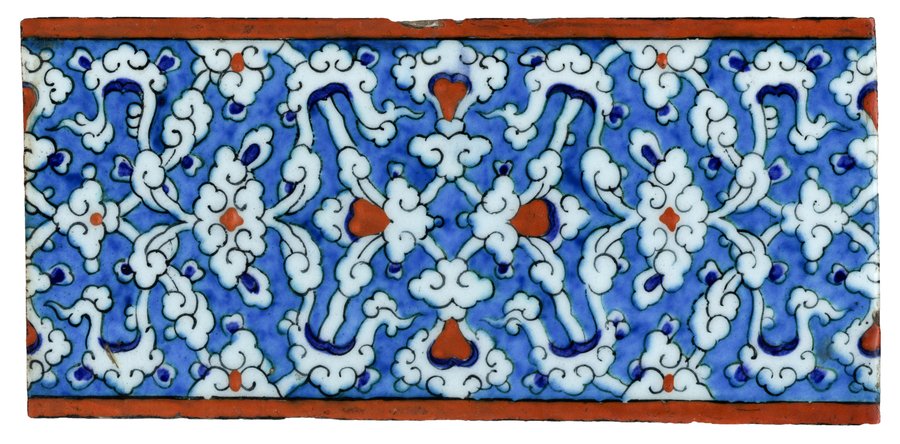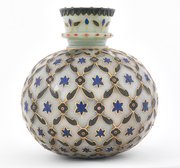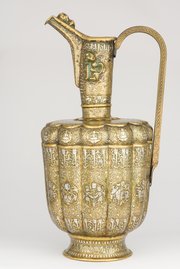
Rectangular Iznik Tile
Museum of Islamic Art
- Title:
- Rectangular Iznik Tile
- Production place:
- Iznik
- Date:
- 1580
- Period:
- Ottoman
- Title:
- Rectangular Iznik Tile
- Production place:
- Iznik
- Date:
- 1580
- Period:
- Ottoman
- Material:
- Fritware, Pigment, Glaze
- Technique:
- Underglaze painting, Glazing
- Dimensions:
- 24 × 11
Iznik pottery is named after the town of Iznik, in western Anatolia (modern day Turkey), where it was initially made. The earliest evidence of Iznik production occurred during the reign of the Ottoman Sultan Mehmed II (r. 854-886 AH/1451-81 CE), whose appreciation for fine blue and white Chinese Ming porcelains inspired potters to start making similar ceramics.
Iznik tile production was revitalised a century later, when the Ottoman Sultan Suleiman the Magnificent (r. 926-974 AH/1520-66 CE) began commissioning tiles to decorate his newly built mosque in Istanbul, which fueled the market and expanded production. More panels started to be produced in order to decorate important buildings, whether secular or religious, across the expanding Ottoman Empire. This tile dates to the 10th century AH/16th century CE, a period when new colours and forms were introduced. It is a rectangular turquoise panel decorated with red borders and white and blue cloud-band motifs, themselves reminders of earlier Chinese influences. Similar tiles of this design can be found in the Suleymaniye Mosque (built between 957-965 AH/1550-1557 CE) as well as in the tomb of Sultan Selim II (r. 973-982 AH/1566-1574 CE) in Istanbul.



